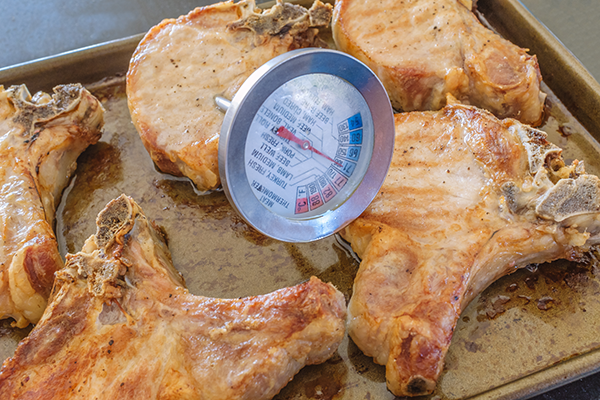Depending on your industry, you may have already heard the phrase COSHH used in reference to health and safety processes. If you’ve been left speculating exactly what this stands for or what these regulations mean for you and your business, continue reading to find out more. Furthermore, we will discuss how you can carry out a risk assessment.
COSHH stands for ‘Control of Substances Hazardous to Health’ and are a set of regulations designed to protect staff from illness when working with specific substances and materials. Basically, this is the law that requires employers to control substances that are hazardous to health
Breach of these regulations by an employer or employee is a crime and can be punished by an unlimited fine.
What is a COSHH Risk Assessment?
A COSHH risk assessment concentrates on the hazards and risks from hazardous substances in the workplace. You only need to carry out a COSHH risk assessment if hazardous substances are likely to be present in your workplace
Remember, health hazards are not limited to substances categorised as ‘hazardous’. Some harmful substances can be produced by the process you use, for example, wood dust from sanding, or silica dust from tile cutting.
What to include in your COSHH Risk Assessment
To comply with COSHH you should follow these seven steps:
- Identify who might be exposed/harmed and how– think about the route into the body (whether the substance can be inhaled, get through to the skin, or even swallowed). One way to determine who has the potential to be exposed is consider each individual work activity and identify likely exposure. Think about how often people work with the substance and for how long. You must consider the different groups of people who may expose themselves:
- Employees.
- Supervisors and managers.
- Contractors.
- Cleaning and maintenance staff.
- Site-visitors.
- Office workers.
- People residing or working in the vicinity
- Assess the risks– select what the risks to health are from hazardous substances produced or used by your workplace
COSHH includes substances including:
- Chemicals.
- Microorganisms, such as eggs and larva
- Chemicals and products containing chemicals
- Vapours, Fumes, mists, and dusts.
- Gases and asphyxiating gases.
- Nanotechnology
- Biological agents (germs). If the packaging has any of the hazard symbols, then it is classed as a hazardous substance.
- germs that cause diseases such as leptospirosis or legionnaires disease and germs used in laboratories.
Please note, COSHH does not cover
- lead,
- asbestos or
- radioactive substances
because these have their own specific regulations.
- Choose what precautions are necessary– do not partake in work that could expose you or your employees to hazardous substances
- Avert or control exposure of hazardous substances– firstly you must try to prevent exposure. If this is not achievable, you must attempt to control the exposure to distinct limits
When deciding how to control a hazard, you should use the hierarchy of control:
- Elimination – Sensibly choose your processes and systems to totally eliminate exposure to hazardous substances.
- Substitution – Replace the hazardous substances used for less hazardous alternatives.
- Isolation – Think about using equipment that encloses the entire procedure to decrease exposure.
- Engineering – Make physical adaptations to your process to eliminate any threat, such as including enough ventilation or putting splash guards on equipment.
- Administration – For example, install signs, ensure suitable training, and alternate jobs.
- Personal Protective Equipment (PPE) – Administer the use of PPE, for example googles and gloves. You must only use PPE as a last resort.
- Ensure these control measures are used and maintained
- Observe and record the exposure of the substance to your employees where a risk assessment has deemed it necessary- there is a legal requirement to record the results of your COSHH assessment if there is 5 or more staff in the workplace. Although if you have less than 5 employees, we’d still advise you to record your results as its great practice. Your record must state hazards, defences you have selected, and how and why you chose them.
- Monitor and review assessment- you must frequently monitor your COSHH assessment in order to know that your methods and procedures are effective. There’s no need to repeat the entire process, but you should review your current version to confirm that it is still appropriate and adequate
Although, you must review your assessment straightaway if:
- There is evidence to propose your current assessment isn’t effective anymore. For example, in the occurrence of an accident or incident.
- Your work environments (such as processes, equipment or substances used) are considerably altered.
Many people do not realise the importance of COSHH. Here are some typical misconceptions of COSHH:

About the Shoutout Safety COSHH Awareness course
This COSHH Awareness course covers the following:
- What substances hazardous to health are, and how they harm us
- Assessment, prevention and limiting risk, including control measures and methods
- Employee responsibilities
- Employer responsibilities
- The golden rules of COSHH
There are 4 sets of questions which you will need to answer. Achieve the pass mark and you’ll be able to move onto the next section. You can watch each section as often as you like but you can’t fast-forward.
Accreditation
This COSHH Awareness course is accredited and endorsed by The CPD Certification Service. Once you’ve completed the course you’ll be able to immediately download a unique, personalized and endorsed certificate to keep with your records or to send to your employer.






